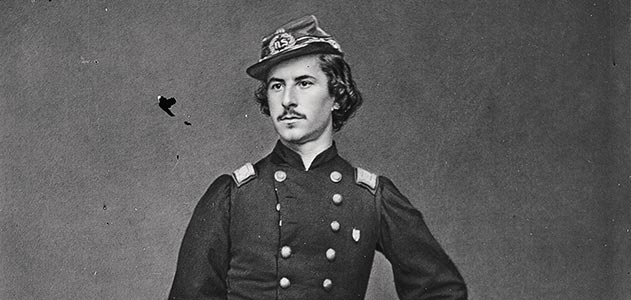Treason against the United States, shall consist only in levying War against them, or in adhering to their Enemies, giving them Aid and Comfort.
—- Article III, Section 3 [Clause 1]
Commander-in-Chief Abraham Lincoln, of the united States, orders Major General Charles W. Sandford, of the New York Militia, to invade and occupy Alexandria, Virginia. During the invasion, Colonel Elmer Ellsworth, commanding the Eleventh New York (Fire Zouves) Regiment, climbs atop the Marshall House inn, and removes the Confederate States flag, which had been visible from the Executive Mansion, in the District of Columbia. James W. Jackson, the owner of Marshall House, fatally shoots Ellsworth point blank, in the chest with a single blast from a shotgun. Private Francis E. Brownell, then fatally shoots Jackson, with a musket for defending his Freedom of Speech.
NOTES:
- It was Lincoln’s invasion of Virginia that was the first act of overt violence in the War of Federal Aggression, and not the firing on Ft. Sumter, in Charleston, South Carolina, ordered by Commander-in-Chief Francis W. Pickens, of the South Carolina Militia. Lincoln was duty bound by Article IV, Section 4, to “guarantee to each State in this [voluntary] Union a [r]epublican Form of Government.” Yet by this action, Lincoln was demonstrating his intention to deny these States a republican form of government. Slavery cannot be used as an excuse to justify the invasion, as even more than a year later, Lincoln continued to deny that he was prosecuting the war to maintain Republican (nationalist) economic domination of the slave States and not to end slavery.
- James Ostrowski describes the “(imaginary) Amendment XI” that Lincoln must have found in the Constitution for the united States for it reflects the actions Lincoln took in his effort to “preserve the compulsory Union” (establish a nation):
- Section 1. Notwithstanding the Guarantee Clause and the Ninth and Tenth Amendments, no state may ever secede from the Union for any reason, except by an amendment pursuant to Article V.
- Section 2. If any State attempts to secede without authorization, the Federal Government shall invade such State with sufficient military force to suppress the attempted secession.
- Section 3. The Federal Government may require the militias of all states to join in the use of force against the seceding State.
- Section 4. After suppressing said secession, the Federal Government shall rule said State by martial law until such time as said State shall accept permanent federal supremacy and alter its constitution to forbid future secessions.
- Section 5. After suppressing said secession, the Federal Government shall force said State to ratify a new constitutional amendment which gives the Federal Government the right to police the states whenever it believes those states are violating the rights of their citizens.
- Section 6. The President may, of his own authority, suspend the operation of the Bill of Rights and the writ of habeas corpus, in a seceding or loyal state, if in his sole judgement, such is necessary to preserve the Union.
Ostrowski, asks, “Would the Constitution have been ratified if it contained such an amendment? Would that amendment have been ratified at any time between 1788 and 1861?
[updated 2/1/2025]
Subsequent Events:
References:
J. Matthew Gallman, senior editor, Civil War Chronicle, (New York: Crown: 2000), 66-68.
James Ostrowski, “Was the Union Army’s Invasion of the Confederate States a Lawful Act? An Analysis of President Lincoln’s Legal Arguments Against Secession,” Secession, State and Liberty, David Gordon, ed., (New Brunswick, New Jersey and London: Transaction, 1988), 158, 173, 178-79.
Chronology Of The American Civil War
civilwarhome.com/timeline.htm


